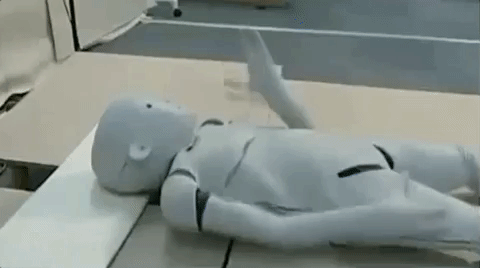“Oh that’s cool. Is it available in China?” This is the common refrain heard around the imposing halls of Shanghai’s Long Museum West Bund at the moment, thanks to Google’s takeover of the private art institution.
The internet giant, which shuttered its China search engine almost a decade ago and caused consternation in some parts with its apparent plans to re-enter the market with a censored search, has a whole host of products and services on display where modern artworks usually sit. Perhaps appropriately, the initiative sits on the fringes of an area that recently hosted the World AI Conference — a government-backed event that was attended by major players from China’s internet scene including Alibaba’s Jack Ma and Tencent’s Pony Ma.
While it might be being kept at arm’s length from the main party, the interactive exhibition is another example of the company’s continued intention to have a presence in Mainland China.
Last year, Google managed to make its Translate app available behind the Great Firewall and has opened up an AI research center in Beijing. In July, the company caused a stir by launching a WeChat mini-app dedicated to doodling, though that hype was soon eclipsed by reports of its supposed plans to build a censored search engine for China.
Related:
 Google Launches WeChat Mini-Program as it Continues to Test China WatersArticle Jul 18, 2018
Google Launches WeChat Mini-Program as it Continues to Test China WatersArticle Jul 18, 2018
At the Long Museum West Bund — one of two hugely impressive art facilities in the city owned by billionaire collector couple Liu Yiqian and Wang Wei — Google has set up dedicated spaces to plug both its Translate app and doodle WeChat program, but most of the exhibition area is turned over to showing off its artsy-oriented AI capabilities.
It’s all highly interactive and selfie-friendly, from displays that use AR to make it look like you’re standing next to famous works of art to emoji treasure hunts. There are areas that show off Google’s t-SNE art map and its ultra hi-res Art Camera, and a wall where you can “connect” artworks via the X Degrees of Separation machine learning experiment.


And then there’s an object recognition area where you get handed a phone and encouraged to “rap along with AI” thanks to the Giorgio Cam:

Thankfully, the system doesn’t seem to have been programmed to say “skr skr”.
The exhibition — which opened to the public as former Google CEO Eric Schmidt was predicting that the internet will soon be “split in two”, with one half led by China — has already proven popular. But it’s also another sign of how the complex China-Google relationship is about more than just search.
—
More on Google in China:
 Code Composer Wang Changcun on the Interaction Between Art & AIArticle Mar 06, 2018
Code Composer Wang Changcun on the Interaction Between Art & AIArticle Mar 06, 2018
 Google Launches WeChat Mini-Program as it Continues to Test China WatersArticle Jul 18, 2018
Google Launches WeChat Mini-Program as it Continues to Test China WatersArticle Jul 18, 2018
 Google Invests in JD.com as the E-Commerce Site Eyes Further Global ExpansionArticle Jun 18, 2018
Google Invests in JD.com as the E-Commerce Site Eyes Further Global ExpansionArticle Jun 18, 2018














